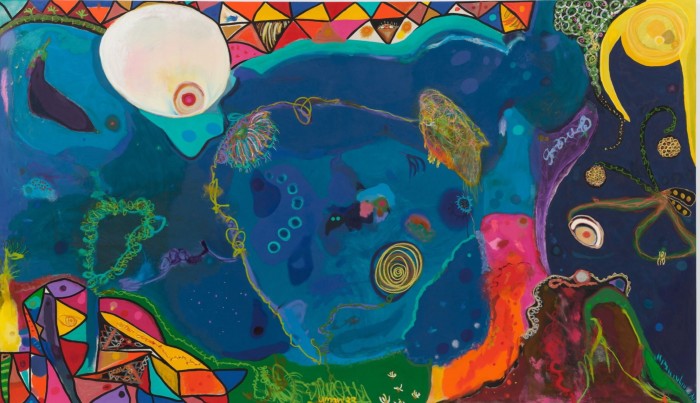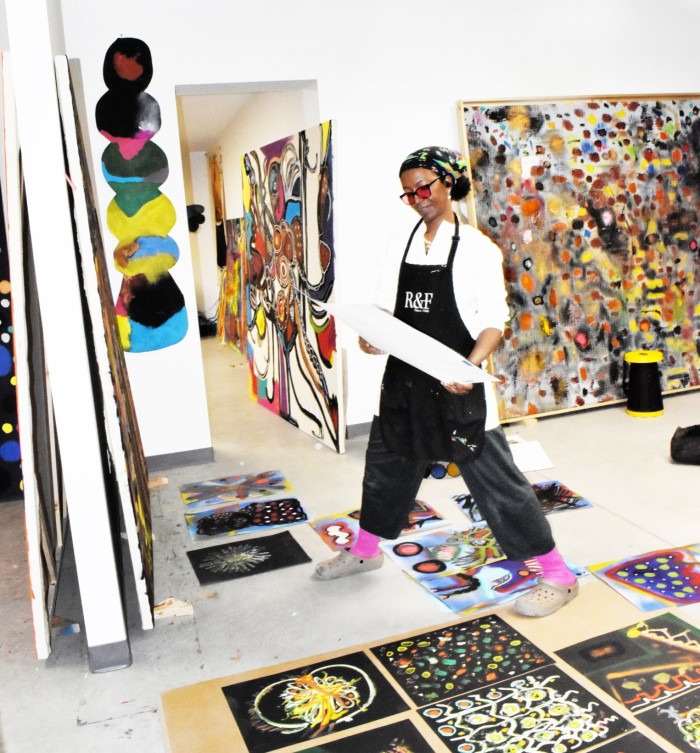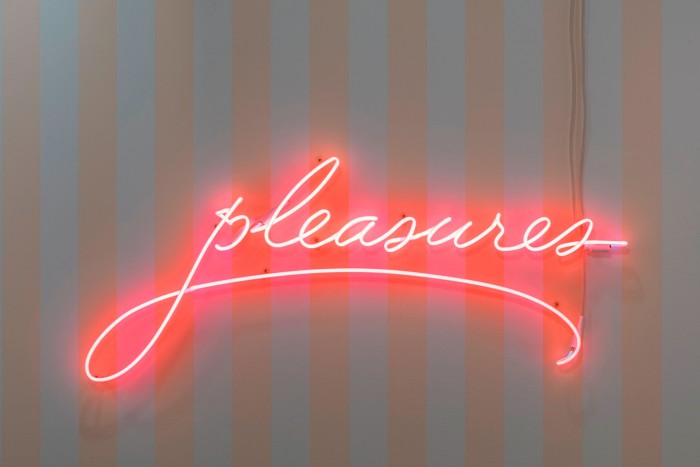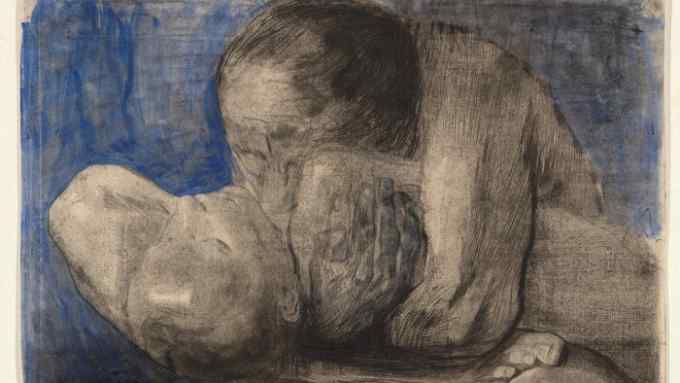Art galleries turn to fresh forms of collaboration as market splinters

Roula Khalaf, Editor of the FT, selects her favourite stories in this weekly newsletter.
This year’s 12th edition of Frieze New York opens with the art trade under pressure. The fair, followed by an extended season of commercial events that culminate in the city’s bellwether auctions, finds itself in a market that has started the year in distinctly depressed form, exacerbated by macroeconomic volatility and geopolitical uncertainty.
Most gallerists are putting on a brave face, noting that decent sales are still being made in an environment where business could be a lot worse. There has been “a little correction”, says Olivia Barrett, founding director of the LA gallery Château Shatto, which brings a mixed booth of artists to Frieze (May 1-5). She thinks that for smaller galleries such as hers, the wider world has a less immediate impact. “We run a tight programme so tend not to experience the peaks or the troughs,” she says.
For some of her peers, though, the backdrop has prompted creative business thinking. “At this moment of uncertainty, adaptability is key,” says the New York gallerist Nicola Vassell. She is referring to the gallery’s tie-up with the global outfit Hauser & Wirth, where the mega-gallery agreed to co-represent Vassell’s artist Uman. Unlike other shared representation deals, for which a partner gallery could, at best, get a small percentage of their artist’s sales elsewhere, the arrangement with Hauser & Wirth splits the commission evenly. Called Collective Impact, the structure was initiated with the Uman partnership last year and Hauser & Wirth has since struck the same deal with New York’s Company Gallery and their artist Ambera Wellmann.

As the (much) bigger partner, Hauser & Wirth’s management sees Collective Impact as “an entrepreneurial way to support a smaller structure and put the artist in mind first”, says gallery president Marc Payot. The idea, he says, came up during the pandemic, “when the gap between the larger galleries and the rest of the ecosystem got bigger”.
The 2023 Art Basel/UBS Art Market report found that at dealers with a turnover of more than $10mn, sales increased by 19 per cent in 2022, while those with turnover below $250,000 reported an average fall of 3 per cent, having also posted the smallest rise in sales in 2021. (The trend sharply reversed last year.)
Collaborating, says Payot, helps prevent the situation where an artist decides to leave their grassroots gallery for a bigger player — known in the industry as “poaching”, but often simply motivated by the artist’s growing commercial success needing a bigger network. Keeping the original gallery on board means that activity continues at price levels where the megas don’t operate and “offers the artist a space where they feel comfortable”, Payot says. In exchange, the structure gives its mega-collaborator “the street cred of access to a younger generation of artists and curators”.


Vassell, who brings a work by Uman to the Independent fair (May 9-12), is equally convinced. With Collective Impact, she says, “the investment of each gallery is singular” within a structure designed to foster sharing. Tangible advantages include having access to Hauser & Wirth’s “enormous expertise, attentiveness and global footprint”, while being able to share information in an otherwise very private market, she says.
The rewards can be immediate. At Hauser & Wirth’s exhibition of Uman in London this year, the artist’s average price range had moved up about 10 per cent, to between $90,000 and $135,000, Payot says.
So is it really win-win? There are those sceptical of Hauser & Wirth’s motives. “You could say they are doing some sort of image management because of a reputation for hoovering up plenty of other artists in the past,” says one art adviser. Vassell says that the reaction from her peers has been “everything from absolute ecstasy to cynicism”. Success, she says, rests partly on “enthusiasm for the unconventional nature of the effort”.
Payot underlines that Collective Impact is not about Hauser & Wirth per se and that he would like it to be a blueprint for the industry “to take the whole ecosystem into consideration”.
No other gallery has openly followed their lead, though there is enthusiasm from some smaller players. “I find what Nicola has done very inspiring,” says Rakeb Sile, co-founder of the Lagos and London gallery Addis, which opens a show in New York’s Nada Exhibition Space soon (Threads of Connection, May 8-June 1). “For the bigger galleries,” she adds, “this is a game they have to play, to support rather than cannibalise the industry.”

Olivia Barrett of Château Shatto says such tie-ups can work well even without the formalised split of commission. She cites her recent partnership with David Zwirner gallery for the artist Emma McIntyre, whose new work, “Milky phonemes” (2024), is among those her gallery is bringing to Frieze. “We’ve always had a very transparent conversation [with Zwirner], rather than being two entities jockeying for inventory and relationships,” she says.
Vassell also gives credit to other galleries with which she shares artists in the more traditional way, including Various Small Fires, Corvi-Mora and The Modern Institute. There’s evidence of galleries joining forces at Frieze too, with 10 of its 68 exhibitors sharing booths, including Sprüth Magers and Karma International showing Sylvie Fleury.
This growing collaborative spirit “won’t stop poaching”, says Magnus Resch, an industry expert and the author most recently of How to Collect Art. “Gallerists have historically had difficulty working together,” he says, “because their businesses are owner-driven — they do what they do because they have a strong identity that they like to share with the world.” But he describes himself overall as “a fan” of the thinking behind the Collective Impact arrangement. “The biggest problem in the art world is its lack of new collectors. The more affordable prices [at smaller galleries] bring people in, and the backing of the bigger gallery gives comfort. Some might then get the ‘collector virus’ and convert into major buyers.”
Some flexibility is built in — each Collective Impact deal is set to run for five years, Payot says, after which “perhaps the artist isn’t as important to the smaller gallery, or perhaps they would rather stay with them only, or they might want to keep the structure — five years is a long time in the art market.” Ultimately, Vassell says, in more challenging times, “it’s about finding ways to grow, joining forces with decent people and having a spirit of adventure.”

Comments